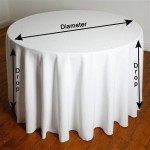Frederick Cooper Porcelain Table Lamps: A Legacy of Elegance and Craftsmanship
Frederick Cooper porcelain table lamps represent a distinguished heritage within the lighting industry, standing as testaments to enduring design and meticulous craftsmanship. These lamps, often characterized by their elaborate porcelain bases and refined details, have graced homes for decades, offering both functional illumination and aesthetic enrichment. The Frederick Cooper brand, known for its dedication to quality materials and timeless style, has cultivated a reputation for producing lighting fixtures that transcend fleeting trends, becoming cherished pieces passed down through generations.
The history of Frederick Cooper Inc. traces back to the early 20th century, with the company establishing itself as a prominent manufacturer of decorative accessories and lighting. The company's commitment to marrying artistic design with functional utility is evident in its signature porcelain table lamps. The intricate details, the carefully chosen glazes, and the harmonious integration of metal components contribute to the overall allure of these lighting fixtures. They are more than mere light sources; they are decorative objects that enhance the ambiance of any room.
Frederick Cooper porcelain table lamps can be found in a wide range of styles, from classic interpretations inspired by antique designs to more contemporary variations featuring sleek lines and minimalist embellishments. This diversity ensures that there is a Frederick Cooper lamp to complement virtually any interior design aesthetic, whether traditional, transitional, or modern. The lamps also cater to different functional needs, some designed for ambient lighting, others for task lighting, and still others for accent lighting, contributing to the overall layered illumination of a space.
The Art of Porcelain Craftsmanship
The foundation of a Frederick Cooper porcelain table lamp lies in the art of porcelain craftsmanship. Porcelain, a ceramic material known for its translucence, durability, and delicate appearance, requires considerable skill and expertise to shape and decorate. The process typically begins with the creation of a mold, into which liquid porcelain clay, or slip, is poured. Once the clay has partially dried and solidified, the mold is carefully removed, revealing the basic form of the lamp base.
Next, the porcelain base undergoes a series of meticulous finishing steps. These may include hand-carving intricate details, applying delicate floral motifs, or adding sculptural elements. The craftsmanship involved in these details distinguishes Frederick Cooper lamps from mass-produced alternatives, adding an element of artistry and uniqueness. The quality of the porcelain used significantly impacts the final product. Frederick Cooper typically used high-quality porcelain that provided a smooth, even surface conducive to intricate detailing and glazing.
The glazing process is another critical aspect of porcelain lamp manufacturing. Glazes are glass-like coatings that are applied to the surface of the porcelain, providing both aesthetic enhancement and protection. A wide array of glaze colors and finishes can be employed, from glossy and vibrant hues to matte and understated tones. Frederick Cooper often utilizes multiple layers of glaze to achieve depth and richness in the final color. The application of the glaze requires precision and control, as variations in thickness or temperature during firing can affect the final appearance. Once the glazing is complete, the porcelain base is fired in a kiln at high temperatures, vitrifying the clay and bonding the glaze to the surface.
The firing process is crucial for achieving the desired properties of the porcelain. High temperatures ensure that the clay becomes dense and non-porous, resulting in a durable and resilient material. The firing also affects the color and appearance of the glaze, often producing subtle variations that contribute to the unique character of each lamp. The quality of the firing process is essential for preventing defects such as cracking, warping, or crazing, which can compromise the structural integrity and aesthetic appeal of the lamp.
Design Elements and Aesthetic Versatility
Frederick Cooper porcelain table lamps encompass a vast range of design styles, reflecting the company’s adaptability to changing tastes and trends. From the intricate floral patterns of traditional designs to the clean lines of contemporary models, these lamps demonstrate an ability to suit diverse interior design preferences. Many designs incorporate elements inspired by historical periods, such as Victorian, Art Deco, or Mid-Century Modern, offering a sense of timeless elegance. Some lamps feature hand-painted scenes, landscapes, or portraits, showcasing the artistic skill of the artisans involved. The detailing of the lamps often extends beyond the base, encompassing the finial, the shade, and the overall proportions of the fixture.
The selection of materials plays a pivotal role in the aesthetic appeal of Frederick Cooper lamps. While porcelain forms the core of most designs, other elements such as metal, wood, and fabric are thoughtfully integrated to create a harmonious visual composition. Metal accents, such as brass, bronze, or nickel, are often used to complement the porcelain base, adding a touch of sophistication and refinement. The choice of metal finish can significantly impact the overall aesthetic, with polished finishes offering a more formal look and antique finishes conveying a sense of vintage charm. Wood components, such as bases or accents, can add warmth and natural texture to the design.
The lampshade is an integral part of the overall design, influencing the quality of light emitted and the visual impact of the lamp. Frederick Cooper lampshades are typically crafted from high-quality fabrics such as silk, linen, or cotton, each offering a distinct texture and light-diffusing properties. The shape and size of the lampshade are carefully chosen to complement the base, creating a balanced and harmonious silhouette. The color of the lampshade can also significantly impact the ambiance of the room, with lighter colors producing a brighter and more airy feel, and darker colors creating a more intimate and cozy atmosphere. The lampshades often feature subtle details such as trim, pleating, or embroidery, adding a touch of elegance and sophistication.
The scale and proportion of Frederick Cooper porcelain table lamps are carefully considered to ensure they are appropriate for a variety of settings. Smaller lamps are ideal for bedside tables, desks, or accent lighting, while larger lamps are suitable for living rooms, dining rooms, or entryways. The height and width of the lamp should be proportionate to the size of the table or surface it is placed on, creating a balanced and visually pleasing arrangement. The overall design of the lamp should complement the existing décor of the room, enhancing the overall aesthetic without overpowering the other elements.
Identifying and Preserving Frederick Cooper Lamps
Identifying a genuine Frederick Cooper porcelain table lamp often involves careful examination of several key features. One of the most reliable indicators is the presence of a manufacturer’s mark or label, typically located on the base of the lamp or on the electrical cord. The mark may include the Frederick Cooper name, logo, or a serial number. However, it is important to note that some older lamps may not have a clearly visible mark, or the mark may have faded over time. Therefore, it is essential to consider other factors such as the quality of the materials, the craftsmanship, and the design style.
The quality of the porcelain itself can be a telltale sign of authenticity. Frederick Cooper lamps typically utilize high-quality porcelain with a smooth, even surface and a consistent color. The detailing of the porcelain should be intricate and precise, with no visible flaws or imperfections. The glaze should be evenly applied and free from cracks or blemishes. The weight of the lamp can also be an indicator of quality, with heavier lamps generally indicating a more substantial and durable construction. Examining the metal components of the lamp, such as the base, the stem, and the finial, can also provide clues about its authenticity. Frederick Cooper typically uses high-quality metals with a durable finish. The metal should be free from rust, corrosion, or significant wear.
Once a Frederick Cooper porcelain table lamp has been identified, proper care and maintenance are essential for preserving its beauty and value. Regular cleaning is recommended to remove dust and dirt, which can accumulate over time and dull the finish. A soft, dry cloth should be used to wipe the porcelain base and the metal components. For more stubborn dirt or stains, a mild soap solution can be used, but it is important to avoid harsh chemicals or abrasive cleaners, which can damage the porcelain or the metal finish. The lampshade should also be cleaned regularly, either by dusting with a soft brush or by vacuuming with a brush attachment. Delicate fabrics such as silk should be handled with extra care to avoid snagging or tearing.
Proper storage is also important for preserving Frederick Cooper lamps, particularly if they are not in regular use. The lamp should be stored in a cool, dry place, away from direct sunlight or extreme temperatures. The lampshade should be removed and stored separately to prevent damage. The electrical cord should be coiled loosely and secured to prevent tangling. If the lamp is being stored for an extended period, it is recommended to wrap it in acid-free tissue paper to protect the finish. Regular inspection of the lamp is also important to identify any signs of damage or deterioration, such as cracks, chips, or corrosion. Addressing these issues promptly can help prevent further damage and extend the lifespan of the lamp.

Frederick Cooper Chinoiserie Ginger Porcelain Table Lamps With Shades A Pair At 1stdibs

Frederick Cooper Chinoiserie Ginger Porcelain Table Lamps With Shades A Pair At 1stdibs

Vintage Frederick Cooper Le Glazed Celadon Porcelain Table Lamp 33

Vintage Frederick Cooper Porcelain And Brass Table Lamp Blue White Roses

Frederick Cooper White Porcelain Table Lamps A Pair Chairish

Vintage Frederick Cooper Ceramic Tapestry Fl Porcelain Table Lamp 31 5

Buy Vintage Oversized Italian Ceramic Lamp By Frederick Cooper Depicting Asian Scene In

A Striking And Large American 1960 S Turquoise Le Glaze Ceramic Lamps By Frederick Cooper Pair Chairish

Frederick Cooper Chicago Cream Multi Ceramic Lamp Treasures Upscale Consignment

Frederick Cooper Hand Painted And Gilt Porcelain Vase Table Lamp At 1stdibs Lamps Vintage Chicago








